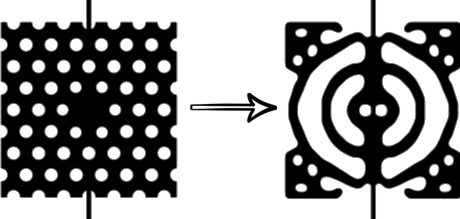The role of work package 3 is to develop numerical calculations and theoretical tools required for the design and understanding of novel EDC cavities.
The mainstay of traditional research in nanophotonics has arguably been ingenious design based on intuition and meticulous trial and error. Despite the impressive list of breakthroughs in the design of nanophotonic cavities, waveguides, and lasers, to name a few, the extraordinarily complex vectorial nature of the electromagnetic field means that one cannot hope to use an intuitive approach to find the best possible design. Inverse design by topology optimization offers an entirely different approach, where device geometries are iteratively improved by optimizing a suitable figure of merit. The majority of results obtained with inverse design so far have yielded nanostructures with highly complex features whose fabrication feasibility and underlying working principles are unclear. In NanoPhotone, we want to establish a new research paradigm by making extensive use of topology optimization, but with the novel modus operandi that nanofabrication constraints as well as physical symmetries shall be incorporated directly in the optimization. In addition, we shall place emphasis on understanding the physical mechanisms and deriving design rules for the nanostructures emerging from the topology optimization process.

Topology optimization example showing the initial geometry of a H1 photonic crystal cavity (left) as well as the resulting optimized cavity structure (right). For details, see Wang et al. Applied Physics Letters 113, 241101 (2018).